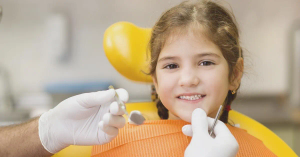Laser technology has made significant strides in various fields of medicine, and dentistry is no exception. From teeth whitening to complex surgical procedures, lasers are now being used to improve precision and reduce patient discomfort. But is this futuristic approach truly better than traditional dental techniques? Let’s explore the benefits and potential drawbacks of lasers in dentistry.
Advantages of Using Lasers in Dentistry
1. Precision and Minimally Invasive
Lasers provide unmatched precision in dental treatments. Unlike traditional methods, lasers can target specific areas without damaging surrounding tissues. This leads to faster healing times and less postoperative discomfort for patients.
2. Reduced Need for Anesthesia
The need for local anesthesia is significantly reduced in laser procedures. This is especially beneficial for patients with dental anxiety or those looking for a quicker, less invasive treatment experience.
3. Less Bleeding and Swelling
Lasers can coagulate blood vessels during surgery, minimizing bleeding and reducing the risk of infection. Post-treatment swelling is also often reduced, making recovery smoother and quicker.
4. Versatility
Lasers can be used in various dental procedures, including cavity detection, gum reshaping, teeth whitening, and even treating root canals. This versatility makes lasers a valuable tool in modern dental practices.
Potential Drawbacks
1. Cost
Laser technology can be expensive for dental practices to implement, and this may reflect in higher treatment costs for patients. Not every clinic offers laser dentistry, and the cost may be prohibitive for some.
2. Limitations
Lasers can’t replace all traditional tools. For instance, they aren’t always effective for removing old fillings or treating cavities between teeth. In such cases, conventional drills are still necessary.
3. Learning Curve
Dentists must undergo specialized training to use lasers effectively, which can take time and resources. This means not every dentist may have the expertise to offer laser-based treatments.
Conclusion
While the use of lasers in dentistry offers numerous benefits, such as precision, reduced pain, and faster healing times, it is not without limitations. For some treatments, traditional methods may still be the better option. As laser technology continues to evolve, its role in dentistry is likely to expand, offering more efficient and patient-friendly treatments in the future. However, the decision to opt for laser dentistry should always be made after consulting with your dentist to weigh the pros and cons based on your specific needs.









